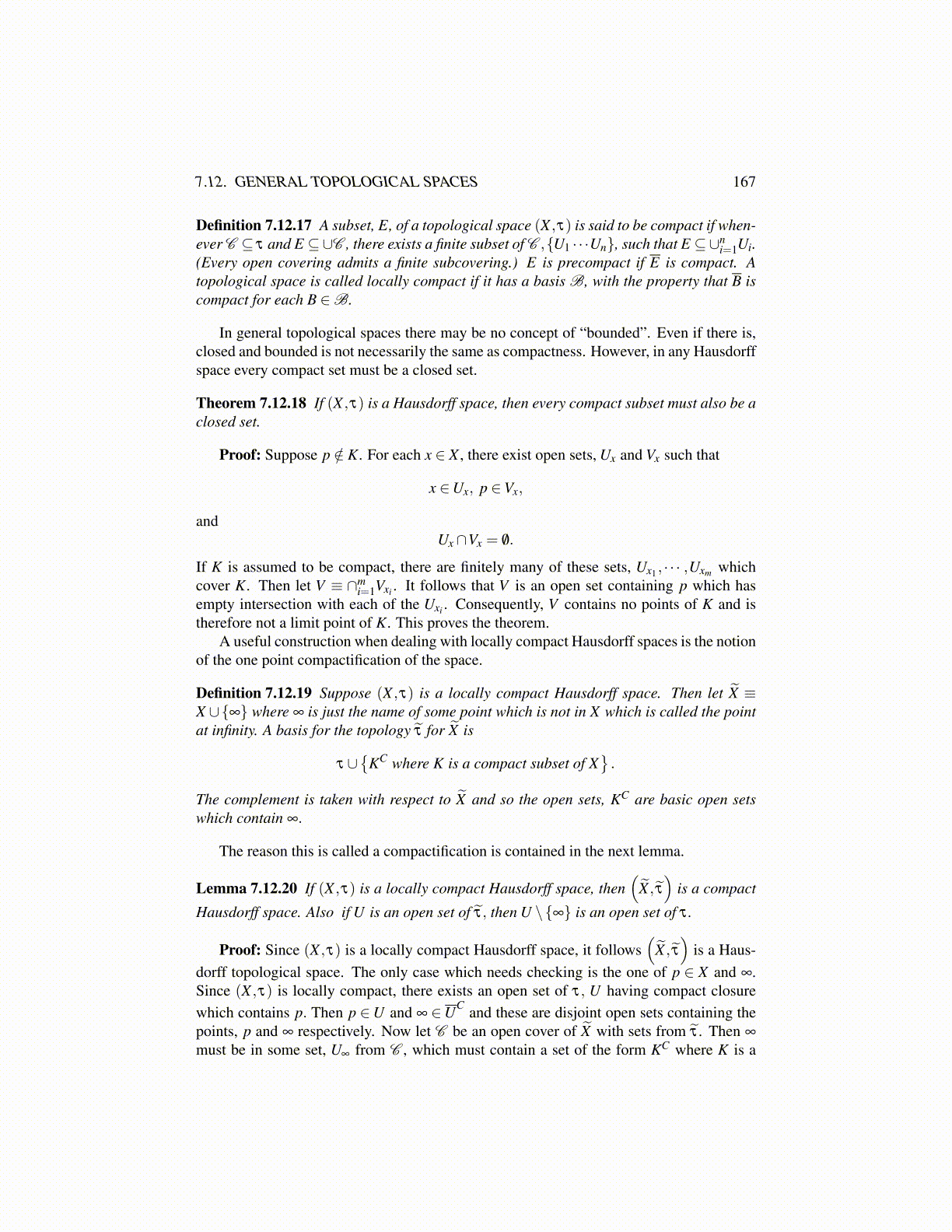
7.12. GENERAL TOPOLOGICAL SPACES 167
Definition 7.12.17 A subset, E, of a topological space (X ,τ) is said to be compact if when-ever C ⊆ τ and E ⊆∪C , there exists a finite subset of C ,{U1 · · ·Un}, such that E ⊆∪n
i=1Ui.(Every open covering admits a finite subcovering.) E is precompact if E is compact. Atopological space is called locally compact if it has a basis B, with the property that B iscompact for each B ∈B.
In general topological spaces there may be no concept of “bounded”. Even if there is,closed and bounded is not necessarily the same as compactness. However, in any Hausdorffspace every compact set must be a closed set.
Theorem 7.12.18 If (X ,τ) is a Hausdorff space, then every compact subset must also be aclosed set.
Proof: Suppose p /∈ K. For each x ∈ X , there exist open sets, Ux and Vx such that
x ∈Ux, p ∈Vx,
andUx∩Vx = /0.
If K is assumed to be compact, there are finitely many of these sets, Ux1 , · · · ,Uxm whichcover K. Then let V ≡ ∩m
i=1Vxi . It follows that V is an open set containing p which hasempty intersection with each of the Uxi . Consequently, V contains no points of K and istherefore not a limit point of K. This proves the theorem.
A useful construction when dealing with locally compact Hausdorff spaces is the notionof the one point compactification of the space.
Definition 7.12.19 Suppose (X ,τ) is a locally compact Hausdorff space. Then let X̃ ≡X ∪{∞} where ∞ is just the name of some point which is not in X which is called the pointat infinity. A basis for the topology τ̃ for X̃ is
τ ∪{
KC where K is a compact subset of X}.
The complement is taken with respect to X̃ and so the open sets, KC are basic open setswhich contain ∞.
The reason this is called a compactification is contained in the next lemma.
Lemma 7.12.20 If (X ,τ) is a locally compact Hausdorff space, then(
X̃ , τ̃)
is a compact
Hausdorff space. Also if U is an open set of τ̃, then U \{∞} is an open set of τ .
Proof: Since (X ,τ) is a locally compact Hausdorff space, it follows(
X̃ , τ̃)
is a Haus-dorff topological space. The only case which needs checking is the one of p ∈ X and ∞.Since (X ,τ) is locally compact, there exists an open set of τ, U having compact closurewhich contains p. Then p ∈U and ∞ ∈UC and these are disjoint open sets containing thepoints, p and ∞ respectively. Now let C be an open cover of X̃ with sets from τ̃ . Then ∞
must be in some set, U∞ from C , which must contain a set of the form KC where K is a